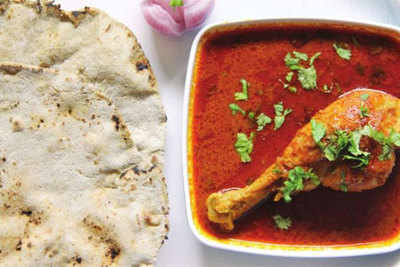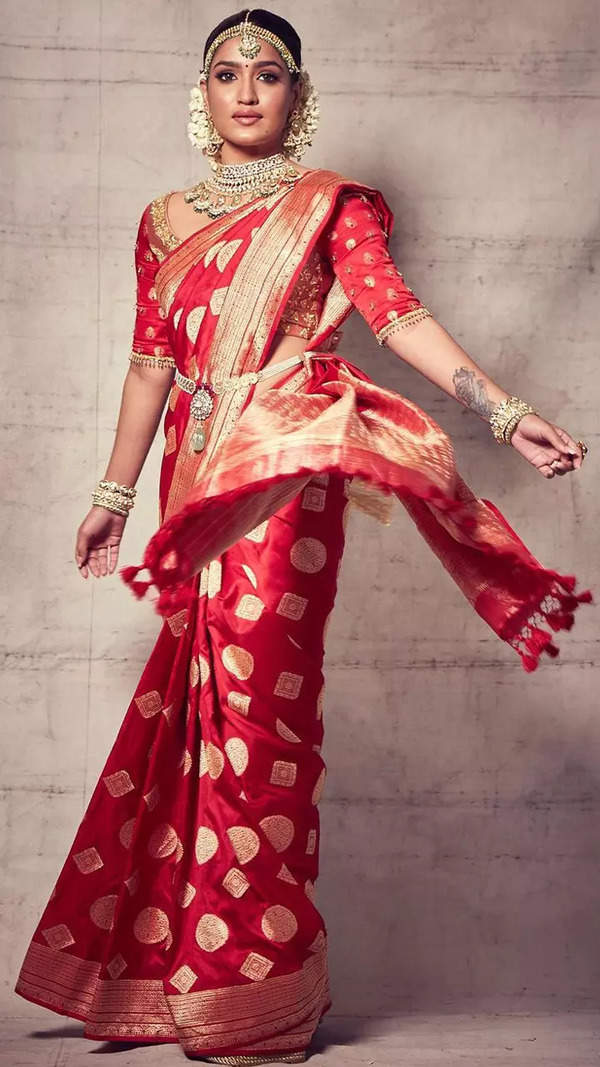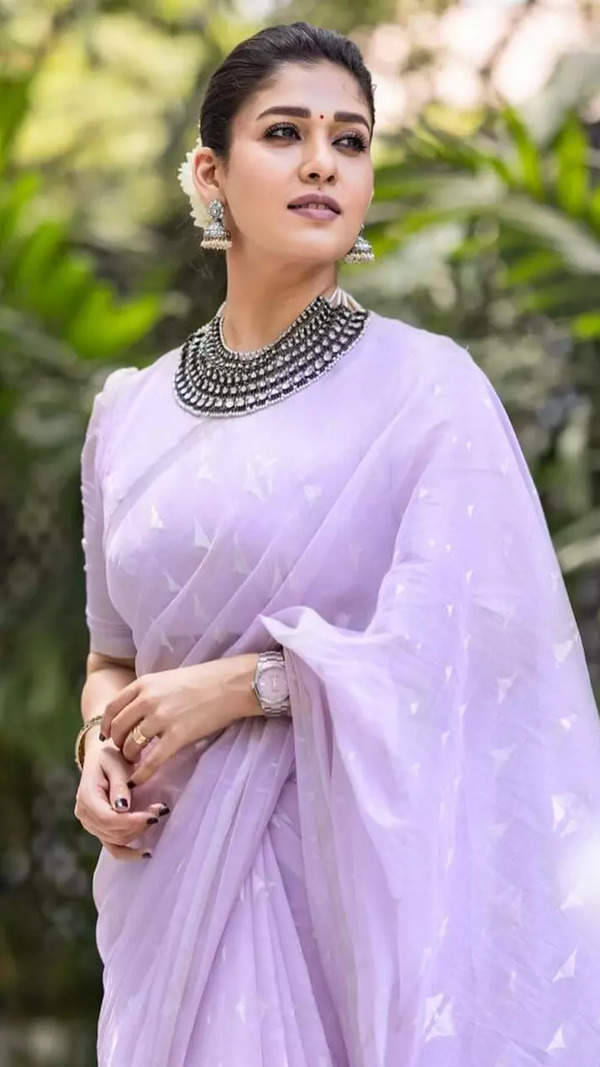Trending
This story is from August 22, 2014
Life in a floatel
Khandeshi cuisine from North West Maharashtra is as much about kala masala as that unmistakable layer of floating oil.

Khandeshi cuisine from North West Maharashtra is as much about kala masala as that unmistakable layer of floating oil.
If you ever had a Khandeshi Maharashtrian for a friend, it's possible that their mother would have you take the ulti mate spice test -stomaching the thecha. The Dhule specialty is made by hand-pounding green chillies, garlic and peanuts roasted over charcoal while drizzling in some peanut oil.It's the perfect pickle-like accompaniment to a bland meal.
Harshada Vartak-Sandhan took the test a day after her wedding, except the dish in question was a blood-red bowl of ussal (think of a runny, fiery mixed beans broth), and the host, her mother-in-law at their ancestral home in Nashik. Ussal, Harshada had tried, but this one was different, she remembers. There was a plump layer of oil floating over it but she managed to stomach that serving.
This was seven years ago. Today, Harshada is quite the expert on Khandeshi cuisine, and along with sister Sonali Raut runs Namak Shamak, a food blog that pays tribute to food from Maharashtra.
The sisters, although compelled to keep the spice levels up when cooking for the family, tone down the masala and oil in the interest of health. Sonali, who is yet to recover from watching Khandeshis skim tarri off a dish and drink a bowlful, has grown to introduce kala masala into her cooking too.
Kala masala is to the Khandeshis what bottle masala is to East Indians.
Every family has its own version of the recipe that's pounded every summer and bottled for use all year long. It's a heavily roasted preparation and includes khopra, coriander seeds, dried red chillies, peppercorns, whole turmeric, cinnamon, cloves, black cardamom, shahjeera, fennel seeds, hing, khus khus, bay leaves, nutmeg, mace, dagad phool, dry ginger and jeera. Those lazy to make the mix at home usually source it from Nashik's famous spice trader, Dagdu Teli. “The first time I saw my motherin-law make kala masala, I thought she was burning the spices.
Everything had turned black,“ says Harshada. Kala masala forms the base for most rassas (curries), together with khopra, garlic and onions. Meat, in particular, goes well with the strong, aromatic masala, especially when slow cooked.
Although slow cooking isn't an option, Harshada does stick to tradition when she can. She makes her bhakris (usually made from rice or jowar) by flattening them with her palm.
Khandesh is a dry region, so, dairy is rare. It's ground peanuts that are used to add body to pickles and gravies. “A common breakfast eat is bhakri slathered with pickle oil,“ says Harshada. “Or we drizzle it over fluffy khichdi made with tur dal and kala masala.“
But the rule the ladies won't break has to do with freshness. “We don't freeze any food before cooking.
Pumpkins, green tomatoes, green sorrel leaves, ridge gourd and the very popular brinjal are all sourced on the day of cooking.“ The Khandeshi baingan bharta or hirva vangyachi bharith, as they call it, is made with green brinjals (long, slim, striped variety commonly found in Jalgaon) that are roasted on an open flame till black. They are then pulped and pounded with green chillies, garlic and peanuts. Bharleli vaangi, another popular brinjal preparation, involves stuffing aubergine with a paste of roasted peanuts, dried coconut, garlic, turmeric, red chilli powder and kala masala.
But the most famous -and easiest -Khandeshi bhaji is made without vegetables. Shev bhaji is a curry made with dry coconut, garlic and onions, and yellow shev or gathia (known as farsan in Mumbai) is its mainstay. The crisp shev absorbs the spicy curry and oil, making it ideal to slurp up with a tiny cone of bhakri.
Before you get onto their blog and try any of the dishes, remember what Harshada's mother-in-law told her, “If it has no oil, it won't taste good.“
STIRRING UP SHEV BHAJI
Ingredients: 1.5 cup shevgathia 1 medium onion -chopped 8-10 cloves of garlic -crushed 2 tbsp dry coconut -grated and roasted 1 tsp mustard seeds 1 tsp cumin 12 tsp hing 2 tsp red chilli powder 1 tsp turmeric 1 tsp kala masala Chopped coriander for garnishing
Method: Pound together the garlic cloves and dry coconut to a paste in a mortar without adding any water. Heat oil in a kadhai, add mustard and cumin. Once they splatter, add hing, chopped onions and sauté till translucent. Add the garlic and khopra paste and sauté on low flame for half a minute. Add turmeric, followed by red chili powder and finally kala masala and mix well. Add 1 tbsp water to prevent the masala from burning. Sauté till oil floats on top.
Now add 1.5 cup water and mix well. Bring it to a boil. Add the shev to the boiling mixture and let it simmer for two minutes. The mixture might turn frothy when the shev absorbs the gravy. Turn off the flame, garnish with chopped coriander and serve immediately if you don't want the farsan to disintegrate into the curry.
If you ever had a Khandeshi Maharashtrian for a friend, it's possible that their mother would have you take the ulti mate spice test -stomaching the thecha. The Dhule specialty is made by hand-pounding green chillies, garlic and peanuts roasted over charcoal while drizzling in some peanut oil.It's the perfect pickle-like accompaniment to a bland meal.
Harshada Vartak-Sandhan took the test a day after her wedding, except the dish in question was a blood-red bowl of ussal (think of a runny, fiery mixed beans broth), and the host, her mother-in-law at their ancestral home in Nashik. Ussal, Harshada had tried, but this one was different, she remembers. There was a plump layer of oil floating over it but she managed to stomach that serving.
This was seven years ago. Today, Harshada is quite the expert on Khandeshi cuisine, and along with sister Sonali Raut runs Namak Shamak, a food blog that pays tribute to food from Maharashtra.
The region falls in north-west Maharashtra and covers Jalgaon, Dhule, Nandurbar, Malegaon, Nashik and Burhanpur in Madhya Pradesh. The Khandeshis like their meals spicy and earthy. Peanut oil, dry coconut (khopra) and dark, tiny lavangi chillies are the hallmark of their cooking. But the foolproof way to tell a Khandeshi dish from another is to look for oil swimming over the dish, locally and lovingly called tarri. “My mother-in-law won't eat her food unless she can mop up tarri with a chapati or bhakri,“ smiles Harshada.
The sisters, although compelled to keep the spice levels up when cooking for the family, tone down the masala and oil in the interest of health. Sonali, who is yet to recover from watching Khandeshis skim tarri off a dish and drink a bowlful, has grown to introduce kala masala into her cooking too.
Kala masala is to the Khandeshis what bottle masala is to East Indians.
Every family has its own version of the recipe that's pounded every summer and bottled for use all year long. It's a heavily roasted preparation and includes khopra, coriander seeds, dried red chillies, peppercorns, whole turmeric, cinnamon, cloves, black cardamom, shahjeera, fennel seeds, hing, khus khus, bay leaves, nutmeg, mace, dagad phool, dry ginger and jeera. Those lazy to make the mix at home usually source it from Nashik's famous spice trader, Dagdu Teli. “The first time I saw my motherin-law make kala masala, I thought she was burning the spices.
Everything had turned black,“ says Harshada. Kala masala forms the base for most rassas (curries), together with khopra, garlic and onions. Meat, in particular, goes well with the strong, aromatic masala, especially when slow cooked.
Although slow cooking isn't an option, Harshada does stick to tradition when she can. She makes her bhakris (usually made from rice or jowar) by flattening them with her palm.
Khandesh is a dry region, so, dairy is rare. It's ground peanuts that are used to add body to pickles and gravies. “A common breakfast eat is bhakri slathered with pickle oil,“ says Harshada. “Or we drizzle it over fluffy khichdi made with tur dal and kala masala.“
But the rule the ladies won't break has to do with freshness. “We don't freeze any food before cooking.
Pumpkins, green tomatoes, green sorrel leaves, ridge gourd and the very popular brinjal are all sourced on the day of cooking.“ The Khandeshi baingan bharta or hirva vangyachi bharith, as they call it, is made with green brinjals (long, slim, striped variety commonly found in Jalgaon) that are roasted on an open flame till black. They are then pulped and pounded with green chillies, garlic and peanuts. Bharleli vaangi, another popular brinjal preparation, involves stuffing aubergine with a paste of roasted peanuts, dried coconut, garlic, turmeric, red chilli powder and kala masala.
But the most famous -and easiest -Khandeshi bhaji is made without vegetables. Shev bhaji is a curry made with dry coconut, garlic and onions, and yellow shev or gathia (known as farsan in Mumbai) is its mainstay. The crisp shev absorbs the spicy curry and oil, making it ideal to slurp up with a tiny cone of bhakri.
Before you get onto their blog and try any of the dishes, remember what Harshada's mother-in-law told her, “If it has no oil, it won't taste good.“
STIRRING UP SHEV BHAJI
Ingredients: 1.5 cup shevgathia 1 medium onion -chopped 8-10 cloves of garlic -crushed 2 tbsp dry coconut -grated and roasted 1 tsp mustard seeds 1 tsp cumin 12 tsp hing 2 tsp red chilli powder 1 tsp turmeric 1 tsp kala masala Chopped coriander for garnishing
Method: Pound together the garlic cloves and dry coconut to a paste in a mortar without adding any water. Heat oil in a kadhai, add mustard and cumin. Once they splatter, add hing, chopped onions and sauté till translucent. Add the garlic and khopra paste and sauté on low flame for half a minute. Add turmeric, followed by red chili powder and finally kala masala and mix well. Add 1 tbsp water to prevent the masala from burning. Sauté till oil floats on top.
Now add 1.5 cup water and mix well. Bring it to a boil. Add the shev to the boiling mixture and let it simmer for two minutes. The mixture might turn frothy when the shev absorbs the gravy. Turn off the flame, garnish with chopped coriander and serve immediately if you don't want the farsan to disintegrate into the curry.
End of Article
FOLLOW US ON SOCIAL MEDIA









